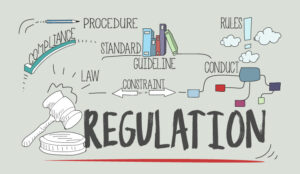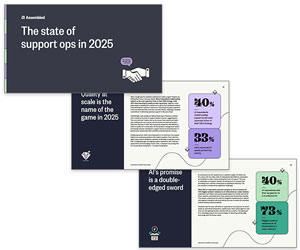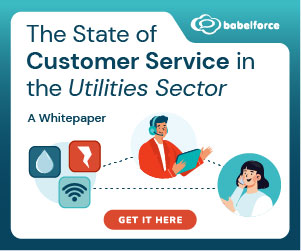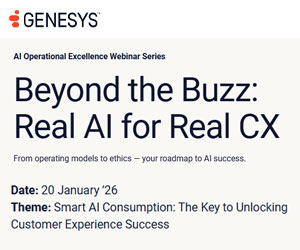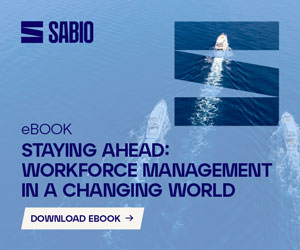At Ai4, four senior leaders, Jing Wang (Vanguard), Bryce Macher (Domino’s), Ryan Wang (Assembled), and Ashish Nagar (LevelAI), joined moderator Andrew Seaman (LinkedIn) for one of the most candid conversations I’ve heard this year on AI in customer experience.
The tone was unusual for a conference stage: pragmatic, unvarnished, and refreshingly self-aware. Each leader acknowledged the messy realities of AI adoption, the internal pressures it creates, and the operational shifts it demands.
For those of us tracking AI’s impact on customer experience, it was a rare opportunity to hear the inside story from leaders who are living it day to day.
As I listened, it reinforced what my own research and discussions with CX executives have shown: the organizations making meaningful progress with AI are not chasing the most visible use cases.
They are methodically building the operational muscle to apply AI in ways that amplify human capability, protect brand trust, and create measurable business value.
AI’s Biggest Wins Happen Behind the Scenes
The panellists were aligned on one point: AI’s most transformative contributions are happening where customers will never directly see them.
Vanguard’s call summarization capability gives advisors back 20–30 minutes per call day. AI-powered quality programs turn scattered performance data into focused coaching opportunities. Decision-support tools guide employees toward the right answers faster and with greater confidence.
These gains are not glamorous, but they compound. When employees have more time and better insights, the customer notices. Not because the technology is visible, but because the interaction feels sharper, more relevant, and more human.
Leadership Models Must Absorb the Shockwave
AI is not slotting neatly into existing structures. As Bryce Macher noted, the people who can bridge technical expertise with business strategy are becoming pivotal. This shift challenges leadership models that still assume static roles and clearly bounded responsibilities.
In my experience, this is a make-or-break moment for many CX organizations. AI’s capabilities evolve monthly, not annually, and leadership teams must adapt just as quickly.
That means reorganizing around problem-solving, not legacy hierarchies, and giving teams the latitude to metabolize change without losing sight of the customer.
Scaling AI Requires a Disciplined Progression
Ashish Nagar outlined a sequence that consistently delivers results: begin with (business) intelligence use cases, then add workforce automation, followed by co-pilot experiences, and finally full automation where both the business and customer stand to benefit.
Jing Wang emphasized that this path only works when the foundations are strong. AI-ready data, clear process design, and an API strategy are prerequisites. Without them, advanced automation magnifies flaws instead of solving them.
The lesson here is simple: scaling AI is not about how quickly you can deploy, but how deliberately you can layer capabilities so that each stage strengthens the next.
Metrics Determine the Culture AI Creates
The Vanguard team learned early that targeting average handle time as a primary measure drove unintended behaviours.
Advisors rushed through calls, service quality suffered, and employee morale eroded. Shifting to journey-level metrics and multi-intent handling created a more balanced, sustainable performance model.
Metrics are never neutral. They signal priorities, shape culture, and influence where AI will be applied. If efficiency measures dominate without connection to customer value and employee engagement, the result is a short-term productivity spike followed by long-term decline.
Balancing Risk Without Losing Momentum
In highly regulated environments, the case for guardrails is obvious. Vanguard has implemented enterprise-wide AI standards, real-time monitoring, and phased roll-outs to ensure trust is preserved as capabilities expand.
Ryan Wang offered a counterweight: many organizations overestimate brand risk, slowing innovation unnecessarily.
Both perspectives ring true. In my research and in conversations with CX leaders across industries, I’ve seen two extremes: brands so cautious they miss the adoption curve entirely, and brands racing ahead without safety nets.
The advantage goes to those who know exactly which risks to mitigate and build safeguards that protect progress, not prevent it.
Human–AI Symbiosis as the Destination
Ashish Nagar’s “level five” vision frames AI and humans as collaborative partners. Machines take on the repetitive and predictable; humans focus on empathy, judgement, and creativity.
The companies that achieve this equilibrium won’t be known for their AI. They’ll be known for the quality of experiences AI enables.
This vision is worth pursuing because it resolves the false tension between efficiency and humanity. Done well, AI doesn’t dilute the customer experience; it deepens it by giving people the bandwidth to deliver their best.
What Executives Should Do Next
The Ai4 panel offered a rare view into the operational reality of AI in CX. Combined with broader industry insights, it points to five imperatives for leaders:
- Target human capacity first. Free people to focus on the highest-value parts of the customer experience.
- Invest in adaptive leadership. Build leaders who can navigate constant capability shifts.
- Layer capabilities deliberately. Advance from intelligence to automation only when each step is stable.
- Align metrics with long-term value. Tie efficiency gains to customer happiness and employee engagement.
- Build guardrails that enable progress. Protect trust while maintaining momentum.
The companies that integrate AI into the core of their operating model, without losing sight of the human beings who deliver and receive the experience, will define the next era of customer experience. The rest will be chasing them.
Author: Justin Robbins
Reviewed by: Megan Jones
Published On: 13th Aug 2025 - Last modified: 17th Nov 2025
Read more about - Expert Insights, Assembled, Justin Robbins









